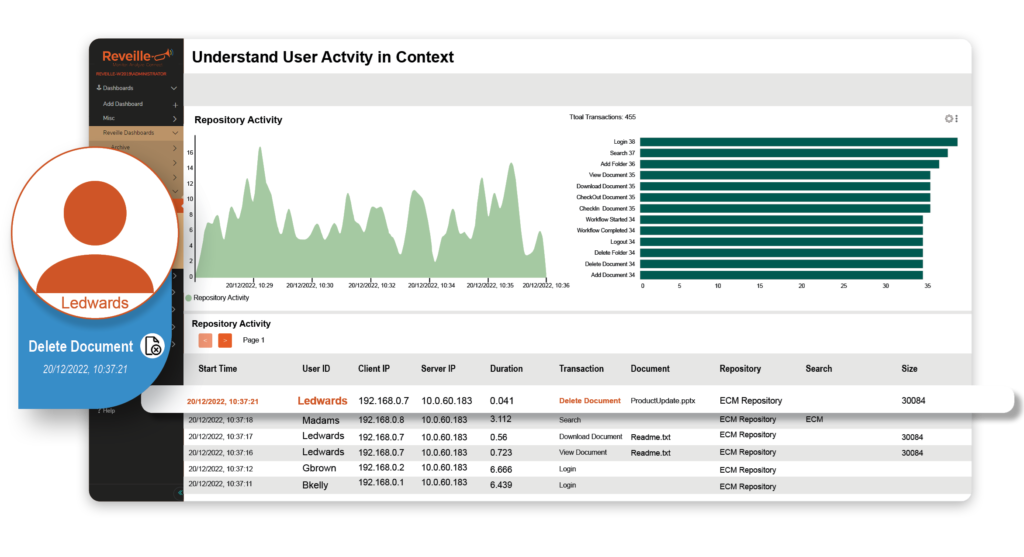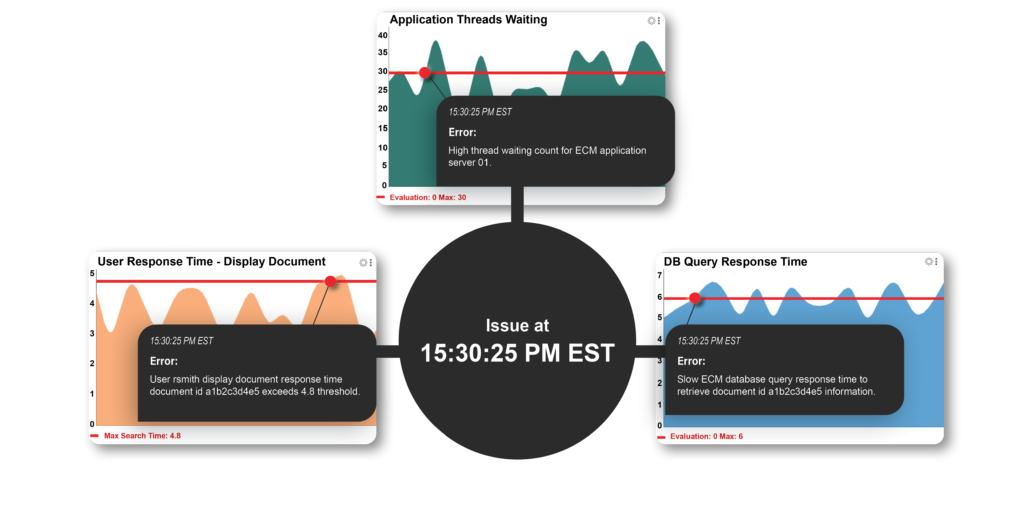Why managing ECM user activity with context matters
Enterprise content management (ECM) applications power business-critical document digital processes. Organizations can have thousands of users accessing repositories daily to view their most valuable secured digital assets. And with user activity comes endless amounts of doc transactions. Given this context, it’s important to understand what users are doing with the repository content when they use it, and how they use it.
There are 3 key reasons to why managing ECM user activity with context matters.
1) Know your business performance and plan ahead
Users dealing with objectively slow content retrieval are ill-equipped to perform optimally. Whether that be processing payments, loan documents, accessing design specifications, or viewing lab reports; being able to understand and manage the time of these transactions is critical for business.
User response time, of course, impacts Service Level Agreements (SLAs). Knowing real user response time with document context allows organisations to identify and resolve service level issues.
In addition to knowing responsiveness for users, knowing the scope of user activity allows proper planning for growth. Planning capacity needs without knowledge of transaction volumes or repository use could lead to otherwise avoidable issues.

2) Dramatically reduce MTTD (mean time to detection) of user issues with correlated ECM platform information
Proper insight into your ECM system and user activity allows for quicker identification of issues. The ability to have a snapshot of ECM user, repository, and infrastructure at the time a threshold is passed dramatically reduces the time of an investigation.
Take, for example, the image below. An issue occurs at 15:30:25 EST. This organisation has decided that for user response time, a search above 4.8 seconds warrants notifying appropriate personnel. This instance is snapshot, along with the data from the same point in time for repository and infrastructure.
This type of user activity insight (correlated with ECM platform fault domain identification) allows for quicker issue detection and resolution.

3) Insider threat detection for your content
Proper insight into your ECM system and user activity allows for quicker identification of issues. The ability to have a snapshot of ECM user, repository, and infrastructure at the time a threshold is passed dramatically reduces the time of an investigation.
Take, for example, the image below. An issue occurs at 15:30:25 EST. This organisation has decided that for user response time, a search above 4.8 seconds warrants notifying appropriate personnel. This instance is snapshot, along with the data from the same point in time for repository and infrastructure.
This type of user activity insight (correlated with ECM platform fault domain identification) allows for quicker issue detection and resolution.
Contextual knowledge is power. And common sense.
Getting a grip on what users are doing inside your ECM system and applications is just good business. And the question is, why operate blindly when you don’t have to? Common web application monitoring tools understand web transactions at the http protocol level.
Reveille User Analytics goes beyond the common general understanding and provides deep ECM business transaction visibility, understanding, and management. The user activity data gathered by Reveille User Analytics fuels license management and chargeback capabilities.
Reveille User Analytics provides comprehensive insight on ECM user activity with context.
